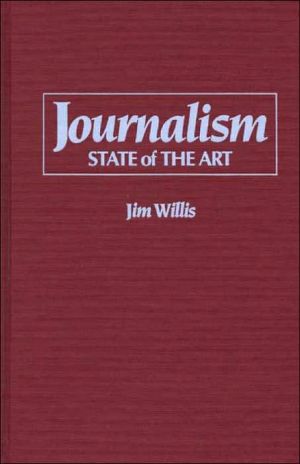

 |

|

The average rating for Journalism: State of the Art based on 2 reviews is 3 stars.
Review # 1 was written on 2010-03-24 00:00:00 Robert Blauvelt Robert BlauveltI found this book hugely informative and helpful in describing the role of the sub-editor, what they do, how they do it. The early years are explained so we understand the reasons for practices and names, but we also get a chapter on the Eddie Shah years and move of newspapers from Fleet Street to computerised, less union-run modern buildings. The various computer programs for paper/ magazine / web news production like Quark X-Press and Adobe InDesign are described with something of their evolution and popularity. We also get mentions of how news was communicated on and after Sept 11th 2001 in New York. The various writers of the chapters describe the work of the subs, and some disastrous and funny occurrences, warning of defamation in captions, looking at headlines, giving names like label, standfirst, page furniture, quote box; and call-out which I only found in the index. Drop caps, screamer (exclamation mark) and fonts get a mention too as this all comes under the sub's responsibilities. We see a page layout from first grid to getting filled with ads, copy text and headlines, photos and photo captions etc. And what happens to materials used, how they are filed, archived and more. Whether the paper has a style guide and where to look for one. We're also told prosaically that web based journalism often doesn't have more than one or two pairs of eyes on text before publication and all future journalists will need to sub their own work. And that website production can be boring compared to journalism. After P 140 we get lists of press terms, an index, other references. I borrowed this book from the Dublin Business School Library and found it very helpful towards my journalism degree. I suggest an updated version would include more web instances. This is an unbiased review. |
Review # 2 was written on 2014-11-10 00:00:00 Danio Brienza Danio BrienzaI was in a bookstore one day several years ago and I saw this book near the counter. I picked it up on a whim and I only got around to reading it late last year. This is non-fiction so I can't use my usual method of analysis but I will still assign a grade. Disclaimer: I'm deliberately avoiding the politics and issues that he talks about in his book because they are irrelevant to my purpose. I'm only interested in the logic of his arguments and the evidence he provides for his arguments. Mr. Goldberg makes a lot of good points. For instance, when he states that "The New York Times has a bias" he provides the following explanation. This is the idea that people of a certain stance started working for New York Times during the 60s, a couple rose to high positions within it over time, and valued pushing their goals more than being objective. Now the paper as a whole is different than what it used to be. I find this to be within reason; certainly the big wigs in a media company can drastically change the culture and output of such a company. Then, Mr. Goldberg asserts, because the New York Times is the "paper of record", other media outlets play Follow The Leader. I can also see something like that happening from seeing similar articles across many papers across several months. This is just one example where I think he has a point. If he's right about half of his total arguments then that would point to a problem in general media. However, his personal problem is that he lacks professionalism and this undermines all of his arguments. Again, I will only show a sample of examples. The first sign of a lack professionalism: trashing reviewers. In this book, he writes at length about reception of his first book, which covers the same idea of a political bias in general media. In short, a lot of people thought poorly of it and expressed these opinions. The subject is certainly relevant but given his lack of professionalism it looks like he's trashing his reviewers and throwing a tantrum about media outlets that didn't give him the coverage that he wanted. This is what you call an "Author Behaving Badly". The second sign of a lack professionalism: creating straw men He talks as if the anger from his former co-workers regarding his previous book is because they're upset that he's exposing their bias, puncturing their bubble, etc. However, I do not find that to be the case. When you say things like "sell their children into prostitution if it meant getting more air time" (page 221, the start of the chapter "liberal bias? Never mind!") anyone would be angered. In addition to this, when referring to them he creates a straw man to make them look bad; a naïve, pampered, stuck-up elitist who claims to be smart but doesn't know anything at all and believes their audience is a group of unwashed, simple-minded hicks. It sounds like he just didn't like or didn't agree with his former co-workers and is venting frustration with name calling. The third sign of a lack professionalism: reliance on anecdotes His reliance on anecdotes is also a strike against his argument, regardless of what point he is trying to make. If someone can't verify his sources and information then he might as well be making it up. Sure one could argue that the people he's talking about would never admit to their bias when asked to verify, and it is a good point. However, it also allows Mr. Goldberg to say whatever he wants because it can't be properly cited. It's basically gossip. Trickster Eric Novels gives "Arrogance: Rescuing America from the Media Elite" a C |
CAN'T FIND WHAT YOU'RE LOOKING FOR? CLICK HERE!!!